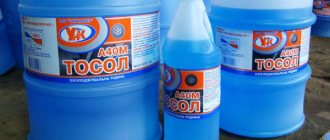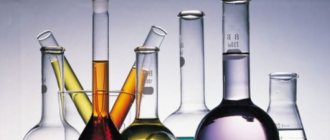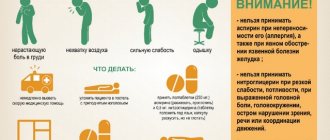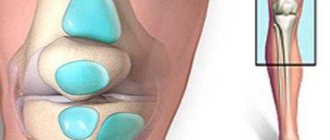If a person is exposed to low temperatures for a long time, or stays outdoors for a long time, frostbite or freezing may occur. In the first case, local cooling occurs, in the second, cooling of the entire organism occurs. Frostbite and freezing occur due to the presence of strong winds and high humidity. In addition to an unfavorable climate, their appearance can be caused by shoes and clothing that are not appropriate for the weather, drinking alcohol, smoking, and the presence of vascular diseases.
Causes of frostbite
When the human body is exposed to low temperatures, damage occurs to the skin and underlying tissues. Exposure to cold cannot be considered a cause of frostbite, as it only contributes to the occurrence of such damage. Low temperatures lead to poor circulation, which then causes tissue death. The main causes of necrosis are:
- paresis, vasospasm;
- deterioration of blood circulation;
- stagnation of blood cells and subsequent formation of blood clots.
Inside the walls of blood vessels, a gradual increase in the endothelial layer occurs, into which plasma enters, areas of dead tissue appear, connective tissue is formed, and the lumen of the blood vessels becomes overgrown.
The process of development of necrosis during frostbite is gradual, it includes a reactive phase. Obliteration of blood vessels and poor saturation of tissues with useful substances occur due to negative changes in the vascular wall.
Symptoms
Most often, frostbite affects the extremities (95% of all cases). Under the influence of low temperature, it is in these parts of the body that blood circulation first deteriorates. Damage to the human body occurs in two stages, the first of which is the pre-reactive (latent) stage, the second is the reactive stage. The first stage is characterized by a short duration (several hours or a day), it begins with the appearance of the first symptoms and ends with warming the body and restoring normal blood flow. This is also called the period of hypothermia.
The beginning of the next stage is to warm the parts of the body affected by frostbite and restore blood circulation in them. This stage consists of early and late periods. The early period lasts 12 hours and is accompanied by impaired microcirculation, negative processes in blood vessels, increased blood clotting, and the formation of a large number of blood clots. When the late period begins, areas of dead tissue appear and infection occurs. The period is characterized by symptoms such as a decrease in body temperature and hemoglobin levels in the blood. In addition, intoxication occurs.
There are four degrees of frostbite, which are determined by the depth of tissue damage. In the first two degrees, the upper tissues are damaged, in the third and fourth degrees, deep-lying tissues are affected.
First degree
With first-degree frostbite, blood circulation is impaired, but tissue necrosis does not occur. Recovery occurs 5-7 days after the body is damaged.
Second degree
With such damage, the germ layer of the skin remains unharmed. Frostbite of the second degree is characterized by changes only in the surface layer. Recovery of damaged cells usually takes a couple of weeks.
Third degree
Third degree damage is indicated by the death of all layers of skin. However, there is no possibility of restoring them. Over time, the scab separates and granulation tissue appears in its place, which subsequently turns into a scar. To prevent this, you need to perform a skin graft. The operation must be performed during the formation of granulation tissue.
Fourth degree
A sign of fourth degree frostbite is necrosis of the skin and deep tissues. The pathological process spreads to the joints and bones, resulting in the formation of wet or dry gangrene of the extremities. Most often it is localized on the hands and feet.
In order for the treatment to end successfully, when examining the injured person, it is important not only to pay attention to complaints and determine the presence of specific symptoms, but also to understand the reasons that could cause their appearance. It is necessary to collect anamnesis, establish the presence of various factors, such as wind, high air humidity and low temperature, the length of time spent in unfavorable conditions, the nature and scope of first aid.
During the latent period of the disease, numbness of the damaged area is felt, sensitivity is lost, and in some cases pain is present. The frostbitten area is cold, it becomes pale, and sometimes turns blue. A person partially or completely loses sensation in the damaged area. A complete lack of sensitivity is the first symptom that may indicate severe frostbite. But during the latent period it is impossible to accurately determine the severity of the lesion.
When frostbitten areas are warmed, blood circulation is gradually restored, then the latent stage is replaced by a reactive stage. During this period, there is itching, burning, tingling, and the damaged areas become warm. In addition, the pain may intensify; if there were no pain sensations before, they may appear at the reactive stage. With frostbite affecting the deep layers of the skin, pain does not increase. The skin acquires a reddish tint, and if severely damaged, it turns blue. During the reactive period, tissue swelling is observed. The depth of frostbite can be judged by its complexity.
The extent of the damage, as well as the nature of its spread, can usually be determined only after a few days.
If cooling and warming of the extremities alternated, special environmental conditions were present (high humidity, air temperature 0-10 ° C), frostbite, called “trench foot,” may develop. Such damage can occur as a result of prolonged exposure to low temperatures. Symptoms appear a few days after cooling stops.
The first manifestations of frostbite are numbness, burning, aching pain in the legs. Damaged skin swells, it becomes cold and pale, and sensitivity is lost in this area. At a later stage, blisters appear filled with hemorrhagic contents, with dead tissue located at the bottom. Intoxication occurs, manifested by weakness, increased heart rate, and increased body temperature. Frostbite “trench foot” often results in a complication – sepsis.
Symptomatic features
Common areas exposed to cold are the cheeks, nose, ears, hands, and fingers. Symptoms of frostbite appear more clearly with prolonged exposure to frost and icy wind. In medical practice, the problem is called “cold burn.”
Experts divide the signs of frostbite according to the level of damage to soft tissues and skin:
- The first degree of frostbite is characterized by superficial damage to the skin that is easily treatable. Clinical signs of pathology include decreased sensitivity of the dermis, a feeling of numbness, and areas of swelling with a reddish border. Recovery is recorded after a week, tissue necrosis does not occur.
- The second degree of frostbite is recorded when transparent blisters form and certain areas of the dermis harden. After a few weeks, the formations dry out, turn black, and fall off the surface. The problem is accompanied by numbness and increased sensitivity of the epidermis to cold exposure. After healing, there are no scars left.
- Third degree frostbite affects the deep layers of the skin. The dermis has a blue-grayish tint, the blisters are filled with exudate. The pain syndrome persists for several weeks, the damaged areas turn black, and ulcerations may occur in the area where they are located. Pathology leads to the formation of scars.
- The fourth degree of frostbite leads to the involvement of muscle, bone tissue, and tendons in the process. The skin becomes discolored, hardens, and sensitivity disappears. A little later, necrosis begins with blackening of the epidermis. Rejection of exposed areas occurs within a few months.
The degrees of frostbite are symptomatic signs of tissue destruction in the damaged areas. In the final stages, some patients experience self-amputation of the fingers of the lower or upper extremities.
Symptoms of frostbite
To provide correct and timely assistance to a victim with frostbite, such skin lesions are divided according to severity. The mildest is grade 1, characterized by sensations of numbness, tingling, and burning. The affected skin is pale, after warming it is swollen and reddened with a purplish-red tint. Such tissue damage usually recovers after 5-7 days, going through the peeling stage.
Symptoms of frostbite 1st degree
With degree 2 frostbite, blisters with transparent contents appear; after the skin is warmed, intense itching and severe pain in the affected skin appear. It may take 2 weeks for the skin to recover.
Symptoms of frostbite 2nd degree
Stage 3 is characterized by damage to all layers of the skin by necrosis. The blisters are filled with bloody contents. Healing takes a long time, more than a month, with the formation of scars.
Symptoms of frostbite 3rd degree
At grade 4, all layers of soft tissue are exposed to necrosis. Skin damage is manifested by severe, persistent swelling and loss of sensitivity.
Symptoms of frostbite 4 degrees
Causes
Key risk factors for the development of cold burns are represented by geographical, occupational or recreational sources:
- improperly selected clothing, poorly heated rooms;
- disruption of the body's metabolic processes, in which it does not retain heat well;
- underweight, dehydration, malnutrition;
- prolonged exposure to cold temperatures - frostbite on the cheeks occurs when accidentally touching glass or metal while traveling on public transport or while sleeping;
- certain diseases that negatively affect blood circulation - diabetes mellitus, Raynaud's syndrome;
- abuse of alcohol and tobacco products.
High-risk groups for frostbite include people without a fixed place of residence and with certain mental disorders.
Factors contributing to the development of frostbite
Why can some people stay in the cold for a long time without consequences, while others can easily freeze their cheeks, nose, fingers? The degree of tissue damage caused by frostbite depends on the age and condition of the body.
Children, the elderly and people with various diseases are most susceptible to the effects of cold.
In children, the cause is too thin skin, lack of protective fatty lubricant on it, as well as an insufficiently developed thermoregulation system. In elderly people, against the background of atherosclerosis, blood circulation is impaired, metabolic processes are slowed down, and motor activity is reduced. People suffering from cardiovascular, endocrine, metabolic and inflammatory diseases can easily get frostbite on their face or limbs due to a decrease in metabolic processes in tissues.
A special group includes people intoxicated; they make up the majority of those affected by the frost. Alcohol is a vascular poison that causes generalized circulatory disorders. In addition, it inhibits brain processes, reduces overall sensitivity and sensations, and a drunk person cannot detect frostbite in time.
Predisposing factors also include lack of nutrition, vitamin deficiencies, smoking, inappropriate or tight clothing, shoes, too much exposure to the cold, high humidity and wind.
Pathogenesis
The formation of tissue necrosis is conventionally divided into two large subgroups.
Local prerequisites include two primary sources of necrosis of cellular structures. The first is represented by direct injury from low temperatures, the second by the instability of metabolic processes and a decrease in the temperature of the internal environment of the body. Direct damage is less common with direct contact. Metabolic is associated with insufficient oxygen supply, increasing problems with blood circulation - the outcome of the pathology is massive cell death and the formation of necrotic foci.
Systemic lesions are also divided into two subgroups.
With the first, reabsorption of products produced by cells susceptible to necrosis is observed. The symptoms resemble standard manifestations of cold burns.
In the second case , the main role is played by uniform hypothermia of the body, which occurs when the temperature is below 34 degrees.
The slowdown of all processes leads to the appearance of certain manifestations:
- a decrease in the body’s need for incoming oxygen at the cellular level contributes to an increase in the time of necrosis;
- attempts to warm up provoke a sharp increase in signs of oxygen starvation and a deterioration in general condition;
- a state of clinical death is registered when the temperature level drops to 24 degrees - this feature is associated with dysfunction of the respiratory section in the medulla oblongata;
- the time of clinical death exceeds the standard 4-6 minutes - the condition allows you to successfully resuscitate the victim.
Emergency measures
Common first aid for frostbite is based on stabilizing blood circulation in the body by warming it up. Most patients' condition worsens due to mistakes made by assistants.
| What to do if you have frostbite | What not to do if you have frostbite |
| Move the victim to a warm place | Bringing the patient into the bathhouse, sauna, steam room |
| Remove all outer clothing and shoes | Leaving wet things on the sick person |
| Wrap in a blanket, put hot water bottles in it | Use a hairdryer, fireplace, radiator |
| Make the patient drink warm tea, milk | Give alcoholic drinks, coffee |
| Place the victim in a warm bath with a temperature of about 20 degrees, gradually increase its temperature to 37 | Send the patient to a hot bath to warm up - vascular ruptures may occur |
| After the bath, the patient is placed under a blanket and warm drinks are constantly given. | Use electric heating pads to warm up after a bath, scalding drinks |
| In case of mild frostbite, wipe the damaged area with an antiseptic solution and gently massage until it turns red. | If there are blisters, do not use massage - their rupture will lead to secondary infection of the wounds |
| When performing assistance outdoors, the affected areas are rubbed with snow. | It is forbidden to rub with alcohol or vodka - the procedure will lead to a sharp drop in temperature and clinical death. |
After providing primary care, you must go to the nearest trauma center or call an emergency team.
Frostbite in children is most often associated with the tongue sticking to metal surfaces. The contact area should be watered with warm water, and the damaged area should be treated with perhydrol. The best option would be to immediately seek professional help - in childhood, a weak immune system can cause serious complications.
Experts focus on the rules under which help with frostbite will give the maximum effect and warn against some erroneous recommendations.
First aid for skin frostbite
In an attempt to save a life, it is very easy to cause even more harm to the victim, so it is better to remember as precisely as possible what you absolutely should not do:
- try to eliminate bubbles, puncture them, rub them;
- rub injured areas with alcohol, ointments, oils, warming rubs;
- drink alcohol as a way to stay warm;
- try to heat the damage using heating pads, various heaters, batteries, etc.;
- rub the localization of the injury with snow.
Any of these actions will lead to negative consequences, including irreversible tissue necrosis, as well as a general deterioration of the condition. Any cream against frostbite on the skin blocks natural circulation, which creates a film effect and will only worsen the damage. Only a qualified specialist can select a product to care for the localized problem.
Regardless of whether it is frostbite on the skin of the hands , feet or face, you need to quickly understand what to do and what measures to take:
- if this is a small area, then you need to stop and warm the supercooled area;
- try to find a warm shelter - in a populated area this is not a problem, but, being outside civilization, any option will do, from a tent to the body of another person nearby;
- carefully, without sudden movements, jerks, remove clothes (shoes) from the injured area;
- help the patient take a horizontal position, cover him for warmth;
- provide the victim with plenty of warm fluids;
- areas that are modified due to exposure to low temperature must be covered without pressure with a sterile bandage;
- In case of large-scale visually identifiable problems or lack of sensitivity in the problem area, immediately contact a medical center.
Therapy methods
The problem with normal blood circulation leads to the need to stabilize it and prevent the death of cells and tissues. In practice, medications, physiotherapeutic procedures, and novocaine blockades are used.
Upon admission to the hospital, providing assistance for frostbite involves the appointment of separate pharmacological subgroups:
- antiplatelet agents, anticoagulants, vasodilators;
- angioprotectors, antioxidants, antihypoxants;
- hepatoprotectors, membrane protectors, antibacterial agents;
- immunocorrectors, pain relievers.
Treatment of frostbite with physiotherapy is represented by separate manipulations:
- hyperbaric oxygenation;
- biogalvanization;
- laser therapy;
- barotherapy;
- UHF therapy;
- electrophoresis;
- magnetotherapy.
Serious frostbite of the limbs and other parts of the body often provokes tissue necrosis. In this case, surgical correction of the damaged areas is necessary, with excision of dead tissue. In difficult cases, amputation is prescribed.
Saving limbs
Severe consequences of frostbite can be avoided if the victim is provided with first aid in a timely manner. It should be aimed at restoring blood circulation in the affected area and, of course, warming the body. After all, cold injury is often accompanied by a general cooling of the body, and this, in turn, can lead to diseases of the respiratory system, kidneys, and joints.
If, for example, your hands, ears, cheeks or nose are frostbitten, contrary to the common folk method, there is no need to rub them with snow. The ice flakes in it can scratch the skin, and the cooling will only increase. In addition, snow can carry an infection. Therefore, it is better to rub the affected area with a clean hand or soft cloth. This should be done until the whitened skin turns red and begins to tingle.
Important
Pathological changes in frostbitten tissues (necrosis) may not appear immediately, but several days after frostbite. Therefore, the victim does not need to postpone a visit to a doctor - surgeon or traumatologist.
Preventive actions
Preventing the development of frostbite requires following a number of recommendations:
- in severe frost, it is better to avoid long trips on foot or by car, especially in sparsely populated areas;
- when going outside, all problem areas of the body should be covered: with a hat, scarf, mittens - frostbite on the hands can occur when wearing gloves, due to the lack of contact between the fingers;
- clothing is selected in accordance with the terrain and should warm the body well, the same rules apply to shoes - frostbite of the feet often occurs when using synthetic socks, boots made of non-natural materials, without an inner layer of fur;
- Smoking, drinking alcohol, drinking coffee in open spaces is prohibited;
- You cannot go out into the cold hungry, immediately after illness, blood loss, or injury;
- You should not wear heavy things, the handles of which pinch your fingers, disrupting blood circulation in them;
- before a walk, oily creams are applied to open areas, all jewelry containing metal is removed;
- At the first sign of frostbite on your fingers and face, you should go into a warm room and warm up.
Following standard preventative measures can reduce the risk of developing a cold burn. Frostbite on children's fingers often occurs when playing with metal shovels or cars - they need to be replaced with plastic analogues.
Experts advise not to spend a long time in the fresh air after frostbite - there is a high probability of relapse of the pathology. Patients must follow all recommendations of the attending physician during the rehabilitation period, avoid direct skin contact with icy wind and frosty air.
Prevention and treatment of skin frostbite
Each stage requires individual therapeutic measures.
If the damage is minor, then gentle effects of electric light and UHF stimulation of regenerative processes are used. If blisters are present, they are punctured, dead areas are removed, special treatment is carried out, followed by isolation with sterile bandages. In the presence of necrotic processes, surgical removal of dead tissue is performed. Additionally, antibiotics and courses of physiotherapy are prescribed. Prevention of this threat is complex and requires attention not only from outerwear. First of all, you should pay attention to the shoes - they should be loose and not put pressure on the foot. The same goes for the jacket. Hats, scarves, mittens are necessary protection that will prevent unnoticed changes in the condition of protruding areas of the body. When exposed to the cold for a long time, it is strictly forbidden to drink alcohol - this will lead to an uncontrolled pathological process.
Metal objects (earrings, rings) can simply freeze to the body, causing local cold burns. In the open air, you should not take off your clothes and shoes in an attempt to warm up - we urgently look for shelter from the wind and cold.












